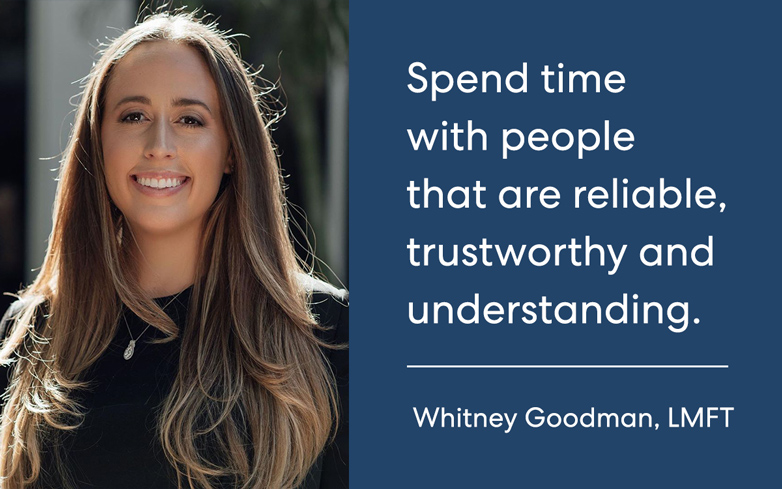Heading Back to the Office? Pro Tips on Readjusting After Difficult Times

Whether it’s deeply personal, or seeing challenges in the community around you, some kind of trauma is part of life. Many are feeling its effects right now, and looking for a way to move forward. The trick to minimizing the effect difficult times have on your life thereafter is to cater to your mental health and general wellbeing, but since that isn’t always easy, we chatted with Whitney Goodman — or, as she’s better known on Instagram, Sit With Whit. Goodman is a licensed psychotherapist and the owner of The Collaborative Counseling Center in Miami, Florida. Below, she walks us through how to foster mental health following a crisis, activities that will help navigate the process, and boundaries to set, to ensure everything flows towards a peaceful, positive life.
How to Foster Mental Health Following a Crisis
After a crisis, Goodman says it’s important to watch out for any signs that you may be having a trauma response. “If you have been through a crisis and are experiencing flashbacks, trouble sleeping, increased anxiety, hypervigilance, or any other new and distressing symptoms, it’s a good idea to meet with a professional and work on safety within the context of that relationship,” she says, noting that creating safety in the body, your mind, and your environment is really important. “I recommend spending time with people that are reliable, trustworthy and understanding.” What’s more, she says to validate your own feelings and experience by telling yourself that you’ve just been through a crisis and that means you’re going to have a normal human reaction. And that’s perfectly acceptable.

Activities That Will Help Navigate the Process
According to Goodman, the best way to peacefully and positively return to life post-trauma is to put your energy into developing three types of safety: environmental safety, relational safety and internal safety. “Environmental safety means that you feel safe within your surroundings (the people, places, and things around you),” she explains. “This may mean changing the people you spend time with or making your home and surroundings feel safe.” Then there’s relational safety, which she says involves feeling safe with other people. “After a crisis, this can take some time to build,” she admits, noting that you can build relational safety with a therapist or a trusted person. “Internal safety can be developed in your mind and your body.” She says that you can work on this through grounding techniques, breathing, creating a safe place to rest, and other body-oriented practices. “If you have been through a recent crisis or are suffering from PTSD, it’s advisable to take these things slowly and do what feels comfortable for you,” she suggests. “You can also work on these skills with a licensed therapist.”
How to Set Boundaries to Encourage a Positive Disposition Post-Trauma
Boundaries are incredibly important, but can be difficult for people to implement and maintain. Goodman wants us all to understand that setting boundaries with time, the people we surround ourselves with, the work we commit ourselves to, and the finances we earn as a result are mandatory for a healthy, happy life — especially when returning to life after a traumatic event.
“Look at the areas of your life where you may be struggling: Are there certain people that are causing you distress? Are there certain places that make you feel drained, uncomfortable, or uneasy? Are there other areas of your life that are causing you to struggle?” she urges us to ask ourselves. “Before you implement a boundary, you need to identify what the issue is and what you would like it to look like.” Once you narrow it down, find a way to create a healthy boundary, and watch as it boosts your mood and improves your life as you move on.





